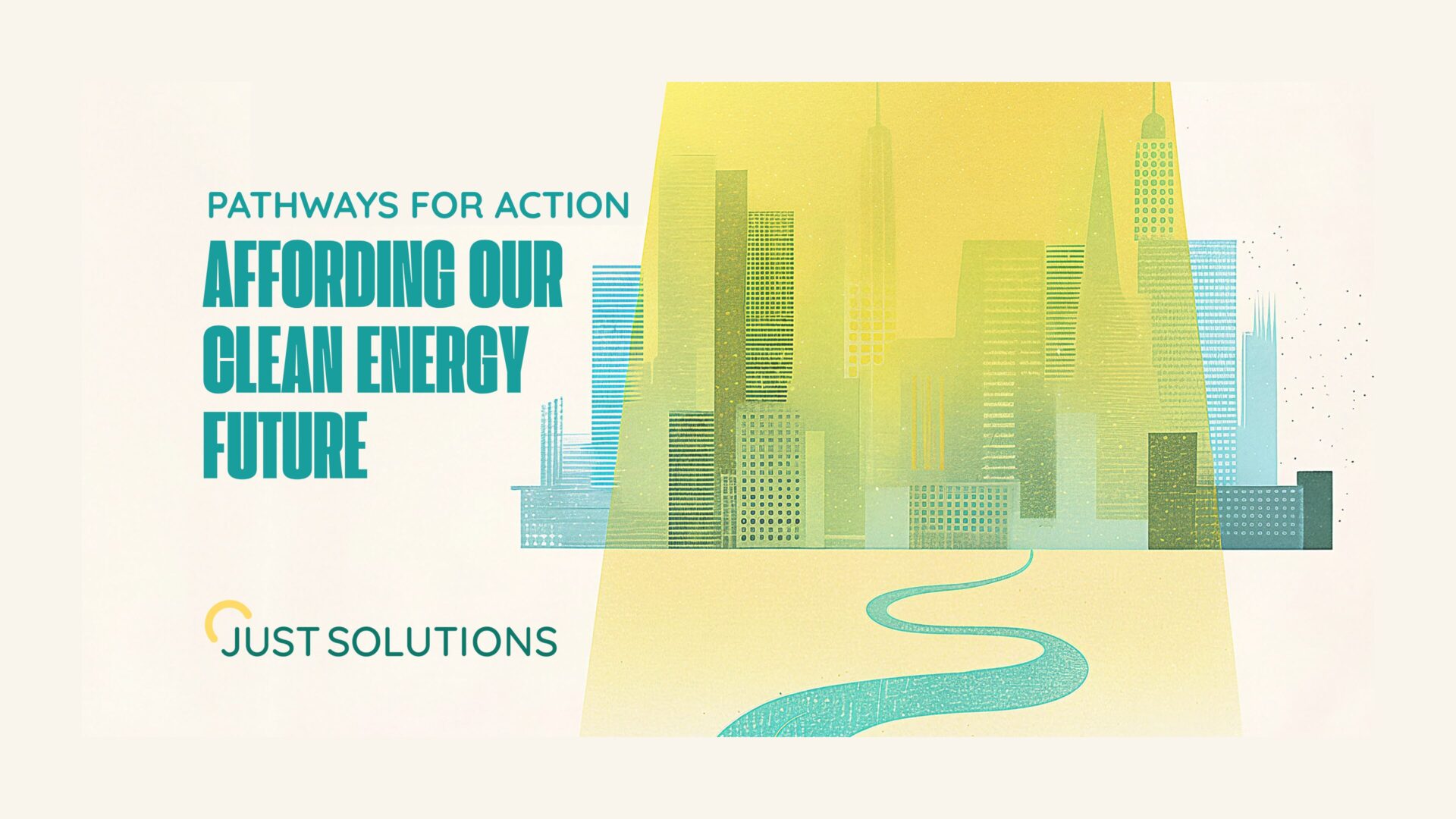By Elena Krieger, PhD. — States face an urgent need to address energy costs—and to do so in a lasting way that ensures long-term bill savings and continues to accelerate the transition to a clean energy future. Across the country, households are struggling to pay for mounting energy bills. Georgia Power, for example, increased electricity rates six times in the last three years.1 In Nevada, the average residential gas price doubled in the last five years.2 Across the U.S., average residential gas3 and electricity prices4 both grew faster than inflation from 2019-2024.5 Meanwhile, utility disconnections are on the rise from South Carolina6 to Oregon.7 From state to state, the costs of everything from mitigating wildfires to integrating new data centers loads are driving up utility bills.
In Pathways for Action: Affording Our Clean Energy Future , we outline the key underlying drivers of unaffordable utility bills, and outline a suite of policy solutions that states can implement to bring down energy costs while continuing to advance an equitable transition away from fossil fuels. The drivers of high bills—including the ones that have been present for decades and the emergent ones that are causing prices to spike—are manifold, and can vary from state to state. Persistently low incomes and the growing cost of housing, food, and medicine make it that much more difficult for households everywhere to pay for their energy bills. But regional trends, such as wildfires in the west and exploding data center growth in places like Virginia, are forcing those states to grapple with their own most pressing stressors.
We wrote Pathways for Action: Affording Our Clean Energy Future to support our partner organizations, state and local policymakers, and communities across the country as they navigate these challenges. As the federal government cancels renewable energy projects that had been poised to deliver affordable, clean energy across the country and rolls back support systems for low- and moderate income households, action at the state and local level is becoming increasingly urgent. No silver bullet will bring down energy costs, but by combining multiple approaches states can achieve sustained affordability. In our report, we present a suite of energy affordability solutions broken into four core affordability pathways. The first set of solutions includes household protection policies such as bill assistance and shut-off protections to ensure that low-income households can afford their energy bills and maintain access to energy, particularly through cold winter nights and summer heat waves.
These measures help make energy bills affordable and bring immediate relief to households, but lasting change requires that we also address the root causes of unaffordable energy. Our second group of policies, therefore, includes residential decarbonization policies and programs that advance a clean energy future in alignment with affordability goals. These include, for example, community solar and balcony solar policies, and weatherization programs to reduce energy demand—as well as approaches to fund home upgrades needed to help low- and moderate-income households implement weatherization measures in the first place.
The third set of policies also address underlying causes of energy unaffordability, but this time by looking at tools for utility reform and accountability to increase transparency and oversight of utility spending and rein in the costs being passed on to ratepayers. These policies range from putting limits on the spending that can be paid by customer bills—such as prohibiting ratepayers from paying for utility lobbying—to requirements that ensure that new large facilities like data centers pay their fair share for grid upgrades.
Finally, many of these policies and programs sound great in theory, but are infeasible without a means to pay for them. While electricity and gas rates can be—and often are—used to fund everything from energy efficiency programs to bill assistance, raising these rates to expand such programs risks exacerbating energy affordability concerns. We therefore provide a suite of funding and financing approaches—from polluter pays policies to green banks—that can help diversify and increase the funding available for household protections and decarbonization measures.
Across the country, households are facing difficult tradeoffs between paying their utility bills and for other essentials like food, rent and medicine, while utilities are asking for ever-higher rates. Now is the time for states to lead—to protect their low-income households from skyrocketing bills, to adopt affordable clean energy, and to rein in utility spending. By tailoring these policies to each state’s challenges, and by ensuring communities are engaged early and often to ensure policy and program designs meet their needs and priorities, we can ensure that we can all afford our clean energy future.
- Jones, E. (2025). After years of increases, Georgia power rates to hold steady — for now. Grist. ↩︎
- U.S. Energy Information Administration. Nevada Price of Natural Gas Delivered to Residential Customers. Accessed: August 10, 2025. ↩︎
- U.S. Energy Information Administration. Natural Gas: U.S. Price of Natural Gas Delivered to Residential Customers. Accessed: August 10, 2025. ↩︎
- U.S. Energy Information Administration. Electricity Data Browser. Accessed: August 20, 2025. ↩︎
- Calculated for June 2019-June 2024. U.S. Bureau of Labor Statistics. CPI Inflation Calculator. Accessed: August 21, 2025. ↩︎
- Bell, S.G. and Su, J. (2025). Powerless in the United States: How Corporate Utilities Drive Energy Unaffordability and Climate Chaos. Center for Biological Diversity. ↩︎
- Scala, M. and Ayres, K. (2024). Temporary Rules Related to Protections Against Disconnection. Public Utility Commission of Oregon Staff Report, Docket No. AR 667, Item No. RA1. ↩︎
